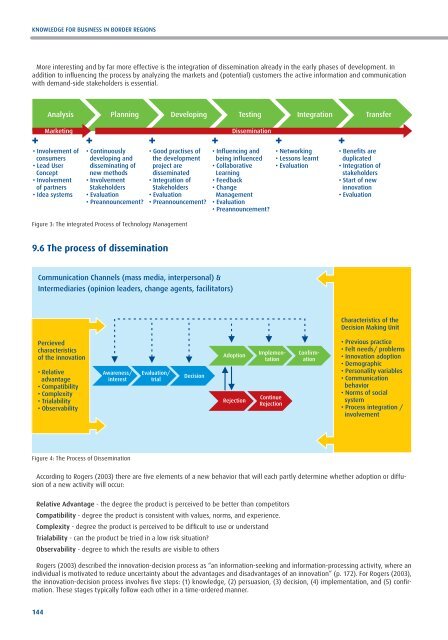TEchNOLOGy TRaNSFER MODEL - Javna agencija
TEchNOLOGy TRaNSFER MODEL - Javna agencija
TEchNOLOGy TRaNSFER MODEL - Javna agencija
Create successful ePaper yourself
Turn your PDF publications into a flip-book with our unique Google optimized e-Paper software.
KNOWLEDGE FOR BUSINESS IN BORDER REGIONS<br />
More interesting and by far more effective is the integration of dissemination already in the early phases of development. In<br />
addition to influencing the process by analyzing the markets and (potential) customers the active information and communication<br />
with demand-side stakeholders is essential.<br />
Figure 3: The integrated Process of Technology Management<br />
9.6 The process of dissemination<br />
Figure 4: The Process of Dissemination<br />
According to Rogers (2003) there are five elements of a new behavior that will each partly determine whether adoption or diffusion<br />
of a new activity will occur:<br />
Relative Advantage - the degree the product is perceived to be better than competitors<br />
Compatibility - degree the product is consistent with values, norms, and experience.<br />
Complexity - degree the product is perceived to be difficult to use or understand<br />
Trialability - can the product be tried in a low risk situation?<br />
Observability - degree to which the results are visible to others<br />
Rogers (2003) described the innovation-decision process as “an information-seeking and information-processing activity, where an<br />
individual is motivated to reduce uncertainty about the advantages and disadvantages of an innovation” (p. 172). For Rogers (2003),<br />
the innovation-decision process involves five steps: (1) knowledge, (2) persuasion, (3) decision, (4) implementation, and (5) confirmation.<br />
These stages typically follow each other in a time-ordered manner.<br />
144


